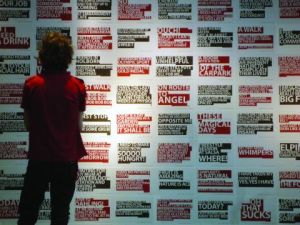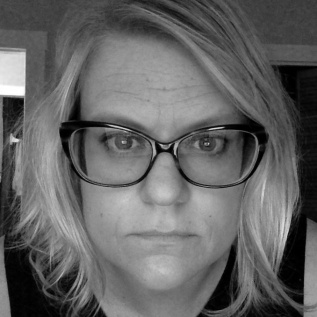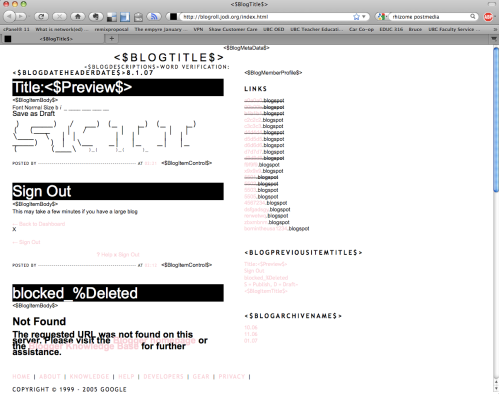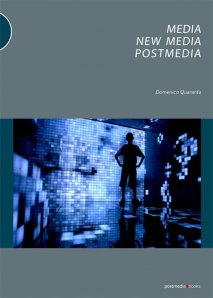Recently I participated in a panel at the College Art Association conference in New York in which “data” was discussed as another medium for artistic exploration:
“As the art being made has dematerialized and the world around us is increasingly information based, using data as another medium for artistic exploration seems not only possible but culturally necessary. The same tools used by corporations and governments to track our interests, desires, locations, and personal information can and are being exploited by artists to criticize, explore, and find poetic moments within the stream of data. This panel explores current approaches being used by artists working with data but with an eye to the past and culture. Since the available data sources range widely from weather patterns to stockmarket trends to GPS locations and possible output spans all types of new and traditional media, this panel does not hone in one a specific issue but works as a survey connecting conceptual and critical points within this practice.”
CHAIR: Jeff Thompson, University of Nebraska, Lincoln
PANELISTS:
> “Data and Its Expression,” George Legrady, University of California, Santa Barbara
> “From Kandinsky to the Database (Point, Line, Plane: Variable, Array, Table),” Brian Evans, University of Alabama
> “Web as Index and Archive,” Penelope Umbrico, Bard College and School of Visual Arts
> “Art that Decodes: Making Sense of Data Process,” Heidi May, Emily Carr University of Art and Design, and University of British Columbia

Thomson & Craighead, London Wall, 2010
In response to the session’s description, I found that each of our presentations approached the topic from different angles, which seemed appropriate and very fitting for my own arguments. I chose to focus not on data as an artistic tool or medium per se, but rather on art that broadens our understanding of the notion of data through various means and media – perhaps by instigating questions about the data that makes up the work and/or our relations with data in contemporary culture. In some instances, the artists I discussed (including Ingrid Koenig, Aymeric Mansoux, Jon Thomson & Alison Craighead, Lucy Kimbell, Julie Andreyev, etc.) may not be all that interested in examining the precise nature of the data they use in their work, but more interested in creating questions about the data. By incorporating a self-reflexive tone into my presentation, I intended to extend this line of inquiry towards “data” and to ideally broaden our interpretation to include the spaces and relations that exist around the numbers and codes, similar to current writings in which I examine the notion of “network” as something we exist with rather than a separate entity . Once again, I am inspired by the philosophical writings of Jean-Luc Nancy (being-with) and Ted Aoki, fascinated by a verb-based understanding of our existence over a noun-oriented understanding of the world we live with.

Aymeric Mansoux and Marloes de Valk, hello process!, 2008
I must admit, however, that much of my theories involving data have merely been carried over from my doctoral research surrounding notions of network in art (both historical and contemporary), thus this paper was experimental in that I was curious if similar knowledge could be applied in each area when looking at contemporary art. Since I am arguing for art that acknowledges a more broad (and at times relational) understanding of data, I felt it necessary to show a wide range of artworks — those that materialize, transform, and perhaps highlight our relationships with/in data. Unfortunately, a twenty minute presentation only allowed for me to hopefully emphasize these larger ideas with the artworks (including drawing, painting, print-based, video installation, screen works, etc.) functioning as examples that depended on one another in order to illustrate my points. My presentation lacked specific analysis of each of the artworks, in terms of them being ideal examples of these larger theories I argue for, and was just the beginning of a larger conversation. For instance, having returned from New York I discovered the work of Zach Gage, which could perhaps be applied to these ideas I am writing about, maybe serving as a stronger example. What I have felt to be most interesting is how these artworks each touch on different aspects of what I am writing about, therefore I don’t feel one or two examples can effectively demonstrate what I am thinking. Instead what is most interesting to me is the ideas that emerge in and between these different artworks and how, when the discussion is centered around these questions of defining data, they can incite new understandings of network culture (maybe data itself) when experienced in the context of the other works. The longer paper written for this presentation is also something that needs more time and development, and could be aided by critical dialogue with others…
(above) desktop documentation of personal interaction with –
Personas (2008) by Aaron Zinman
International Society for Education Through Art ( InSEA)














